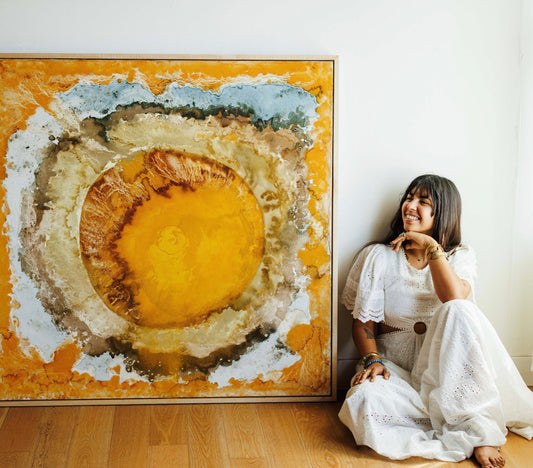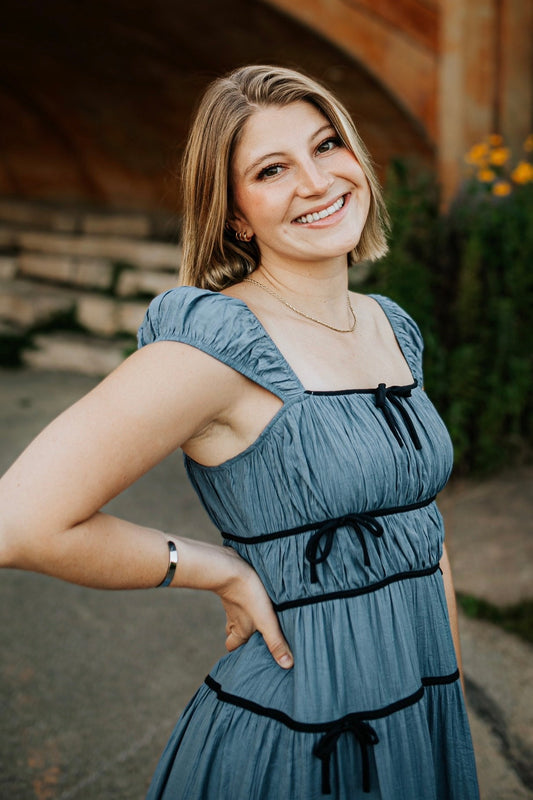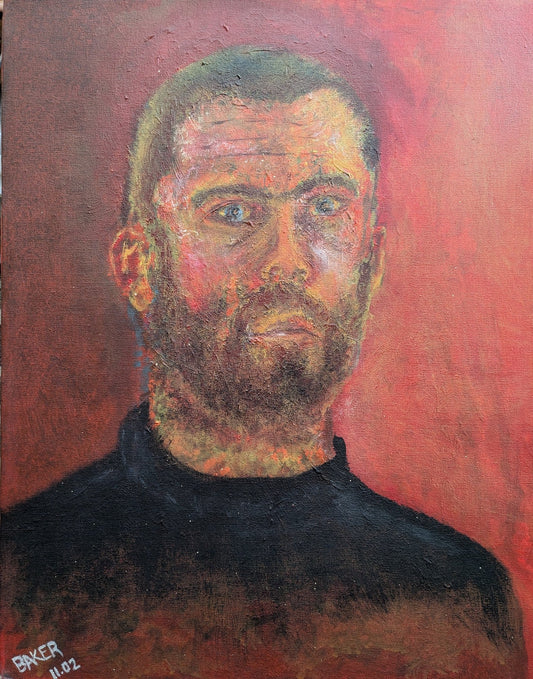Ali Alamdar is a 22-year-old Kuwaiti contemporary portrait artist from Houston, Texas. Like any young kid, his earliest memory of making art was simply drawing anything he could find. He vividly remembers sketching hundreds of planes and Spiderman as a child. Alamdar is a self-taught artist but is hoping to join an MFA program after his undergraduate degree. He is currently a senior at the University of Houston-Clear Lake to pursue his B.S. in marketing. According to Alamdar, as an artist, it is important to know how to gain exposure, build connections, and obviously, how to sell his artworks. “I feel like everyone should learn a bit of marketing to handle the business side of art,” Alamdar said.
Even though Alamdar has always been fascinated by art by sketching planes and Spiderman, he admits that his art journey began some time in 2016 while walking around Sam’s Club, a store similar to Costco, and saw a briefcase full of art supplies and was immediately drawn to it.

He remembers waking up the next day and his first initial thought was to start sketching portraits and even though they were not perfect, he admits that it was enough to motivate him to better his artworks.
As a contemporary portraiture, his portraits are a mixture of modern and traditional, where it generally includes the head and shoulders but with Alamdar’s own take on a complete but incomplete portrait. The reasoning behind his artworks looking incomplete is because he wants viewers to appreciate the beauty of imperfection. “I challenge society’s expectations of perfection and showcase that true beauty lies within the imperfection,” according to Alamdar. At the same time, his portraits are also a reflection of his own personal life. Most of his portraits are missing a mouth. This is because it is a reflection of Alamdar’s personal issue. “I never tell anyone anything I am going through,” Alamdar said. By completing an artwork without a mouth, Alamdar places a piece of him on his portraits. According to him, he paints himself and his story, but disguised in another person’s face. Personally, no mouths on the portraits indicate some sort of mystery towards that person, as if they have secrets that they don’t want to be discovered.


Alamdar’s most recent series is called Picking Up the Pieces, which is about the process of healing after losing oneself. “It’s a series of self-reflection after destruction. It’s a very emotionally charged series,” Alamdar describes. In this series, the figures’ eyes and hands are the focus in every portrait, while the rest are just outlines. I personally enjoy this series due to my own optimism. When looking at the pieces, there is some sense of hope, even at the toughest of times. The figures don't look too stiff and look like they have some fluidity in them, compared to Alamdar’s prior series called Void. This series is about a complete loss of emotions—a complete void. Unlike Picking Up the Pieces, where the hands are the focus, Void wants the viewer's focus on the eyes only, as if those deadly stares have the ability to burn through the viewer. Also, the portraits in the Void series are all in the same position, with the head and shoulder facing directly to the viewer, as if they are set in stone with their own state of mind. “It shows when people have reached the end of the road emotionally and just snapped,” Alamdar explains.
“My work is my entire life. Being an artist is my personality. It’s what drives me. It’s what gives me purpose in life,” according to Alamdar. Even when he is not painting, he admits to thinking about art constantly. It could be finding the next person to sketch, the next color scheme, looking up reference photos, or studying other artists he admires. He constantly surrounds himself in art. However, when it comes to coming up with ideas, he admits on letting life decide that for him. The more he forces himself to come up with new projects, it gets harder and more frustrating for him. “I just live life and wait for an idea to pop in my head,” Alamdar admits.


Alamdar’s artworks scale in various measurements, from 11” x 14” to 36” x 60”, however, most of his works fall around 30” x 40”. His creative process consists of him in his studio, either watching a true-crime documentary or listening to a Disney playlist, to set the mood. “There’s no in-between, it is either death or Disney,” Alamdar jokes. With an idea in mind, he starts the process by “laying down the messy abstract layer to create the background” using acrylic paint. Once the background is completed, Alamdar starts to sketch the portrait using vine charcoal, followed by oil painting. To jazz up his artworks, he also adds a few oil pastels “for some fun marks and squiggles,” according to Alamdar.
Not only does Alamdar want viewers to appreciate the beauty of imperfection, he also wants viewers to be hypnotized by his works. He wants the viewers to get up-close to the portraits and follow the movement of the brush strokes and wonder what it can all mean—why this color scheme or what the portrait could possibly be feeling. He wants viewers to feel some kind of connection with the pieces. Not only does Alamdar challenge the viewers, he is also challenging himself to learn to criticize his own artworks. As an artist, he advises everyone to push themselves harder and to keep growing. “Find out what you like and dislike… carry on with the things you like and fix the things you dislike,” according to Alamdar.
He currently has artworks on display at Bill Arning Exhibition as part of the gallery’s showing called Figurish, which will run until March 4, 2023.
©ArtRKL™️ LLC 2021-2023. All rights reserved. This material may not be published, broadcast, rewritten or redistributed. ArtRKL™️ and its underscore design indicate trademarks of ArtRKL™️ LLC and its subsidiaries.





